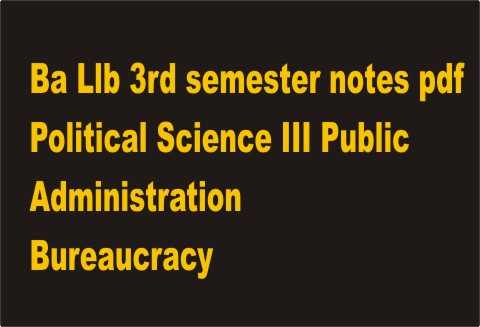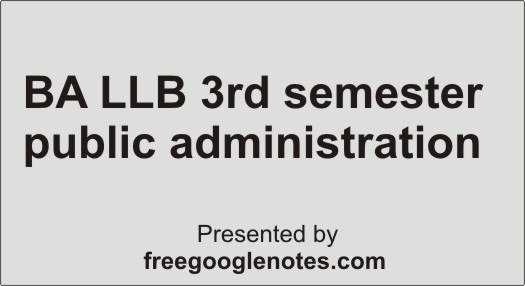Table of Contents
Communication skills-What is the difference between note making and making reports of a meeting
You can follow us @freegooglenotes
Q. 1. What is the difference between note-making and making reports of a meeting? Compare the both.
Ans. (communication skills)The notes verified and signed by the chairman of a meeting act as prima facie evidence of the proceedings. Unless the contrary is proved, they can act as evidence in the Court of Law in case of any dispute but the responsibility for proving against the notes lies on the shoulders of the party which disputes the authenticity of notes. By notes, we mean a concise and accurate official record of the decisions taken at the meeting of the company. According to Palmer, “Notes are the written records of the business done at the meeting.” The notes of meetings of shareholders and directors must contain the following particulars :
1. The kind of meeting with date, time, and place.
2. The name of the person in the chair, and the name of directors and persons in attendance in a board meeting.
In certain cases, it is expedient and essential that facts relating to a meeting should be maintained in some permanent form for future use and to fulfill the statutory requirements. In India, as per the Companies Act,
1956, every company is required to maintain proper notes of shareholders’ meetings and the meetings of the Board of Directors.
Difference between notes and reports
Reports are always in a narrative form giving a historical account of the things discussed at a meeting. But the notes are intended to record the fact of holding the meeting and of taking certain decisions. They are purported to serve as official records whereas a report is meant for the benefit of outsiders. Notes of a meeting differ from its report much as a report contains an account of what happened at a meeting and narrates the whole course of proceedings in greater detail including the discussions and comments made there. A note begins with the word ‘Resolved’. The word ‘Resolved’ is not written while writing a report. Reports are always written in a narrative form giving a historical account of all that was discussed. Notes are generally not written in a narrative form. Notes record date, time, and place of the meeting and resolutions passed. Notes can be prepared within a reasonable time after the meeting.
Separate notes have to be prepared for each meeting. The exact wording of resolutions adopted at the meeting must be recorded in notes. A report may not contain the exact wordings of discussions taken at a meeting. A report needs not be accepted by a court as evidence. Approved and signed notes are accepted by courts as evidence.
The following illustration will point out clearly the difference between reports and notes.
Example of Report :
Mr. Pranab proposed that an application should be made to a nationalized bank for a loan of Rs. 50 lakhs for the purpose of installing a new plant to be imported from England. The motion was seconded by Mr. V. During the discussion, an amendment was moved by Mr. Z and seconded by Mr. Yashwant, that the amount be Rs. 55 lakhs so as to allow the purchase of extra accessories and parts along with the main plant. After some discussion, the amendment was voted upon and passed. Thus the original motion was amended and was carried unanimously.
The same matter can be recorded in the form of notes like this:
Notes. Resolved that an application be made to ——— Bank, New Delhi for a loan of Rs. 55. lakhs (Rupees fifty-five lakhs) for the purpose of importing and installing a new plant along with additional spare parts.
Q. 2. Define the Desired contents of a good note. Please define the principles of making notes.
Ans. (Communication skills pdf)The notes of meetings of shareholders or directors must contain the following particulars:
1. The reading and confirmation of the notes of the last meeting and the fact of their being signed by the chairman, together with any matters arising from the notes and decisions taken, if any.
2. The name of the person in the chair, and the name of directors, the secretary, the persons in attendance in a board meeting, and the number of members (in a general meeting).
3. The kind of meeting with date, time, and place.
4. The names or number of absentees.
5. A brief subject heading of each minute with the full text of the resolution adopted.
6. The appointments made and expenditure authorized.
7. Signature of chairman and date of verification of notes as correct. Notes should be entered in the book specially kept for the purpose. The notes must be recorded in the running order, each note is separated from the other by the number and appropriate heading.
8. Contractual transactions considered by the meeting and whether accepted or not.
9. The financial statements, reports received from officials or committees and whether approved or not, and if approved, these may be incorporated in the notes in the form of an ‘Appendix’.
10. Any instructions are given by the meeting to the secretary or other officers of the company.
Kinds of Notes
(b) The solicitor to the Company, Mr. S.P. Gupta produced the certificate of incorporation No. 74765 dated 5th October 2004.
Principles of Recording Notes
1. Self-containment: The minute should stand by itself so that information is not required if it is referred to somebody. If readers want the “background”, they should be able to check references.
By notes, we mean a concise and accurate official record of the decisions taken at the meeting of the company. According to Palmer, “Notes are the written records of the business done at the meeting.” The notes of meetings of shareholders and directors must contain the following particulars :
1. The kind of meeting with date, time and place,
2. The name of the person in the chair, and the name of directors and persons in attendance in board meetings.
Q. 3. Please furnish the examples of notes made during the following meetings:
(a) Meetings of shareholders
(b) Annual general meeting of shareholders.
(c) Extraordinary General Meeting
Minutes of the proceeding of the Statutory Meeting of Alpha Company Ltd. held on……….at……….at the Registered Office of the Company,
Present :
A. ————————— Chairman
B. —————————
C. ————————— Directors
D. —————————
E. ————————— Secretary
and 73 shareholders.
1. Statutory Report: The Statutory Report dated …………………….. was with the consent of the meeting taken as read.
inspection of the members.
Secretary Chairman
Minutes of the proceeding of the Twenty-Third Annual General X.Y. Company Limited held at Registered office of the company on ……..a.m.
Present: Mr………..in the chair, Messrs…………….and………….Mr………….Secretary, Mr…………….Solicitor, and……………shareholder
4. The register of directors’ shares and debentures holdings was and left open and accessible throughout the meeting.
Mr ……………………. shareholder, proposed and Mr ………………. shareholder seconded that Mr. ‘A’ be, and he is hereby removed from a director of this company and that Mr. ‘B’ be, and he is hereby a director of the company in his place, to hold office only during such ‘A’ would have held office if he had not been removed”.
The chairman proposed and Mr…………….seconded that Mr…………..one of the directors retiring by rotation who offered himself for repo re-elected.
The chairman proposed and Mr…………….seconded that Mr…………….be elected director in place of Mr……………..the other director retiring by rotation who had informed the company that for health reasons he did not wish to offer himself for re-election.
Mr. S. proposed and Mr. D. seconded “that Messrs. R. & Co. be are hereby appointed auditors of the company for the ensuing year at an 80,000 in place of Messrs Z & Co”.
A vote of thanks to the chairman, proposed by Mr…………..and by Mr…………….., concluded the meeting.
Secretary Chairman
1.
2.
3.
Mr……………………..was voted to the chair.
Agenda
To consider the appointment of Mr………………………as Director.
Proceedings
The question of appointment of Mr………………………. as a Director of the company was examined by the members and it was resolved as under:
“Resolved that Mr…………………be and is hereby
appointed as Director of the company with effect from…………………”
“Further resolved that Mr……………………be and is hereby authorized to complete the necessary formalities of intimating the Registrar of Companies about the appointment of Mr…………………as Director of the
company”.
Any other matter :
There being no other item on the agenda, the meeting ended with a vote of thanks to the chair.
Dated.Sd/-Secretary Sd/-Chairman
Q. 4. Compare and contrast between formal and national grammar.
Ans. Formal grammar is the grammar that both in theory and in the method is concerned solely with the observable forms, structural functions, and interrelations of the components of sentences or stretches of utterance. The modern grammatical theory is frequently said to be ‘formal’, in contrast
with traditional grammar, which was ‘notional’. According to Jesperson, ‘notional’ grammar starts from the assumption that there exist ‘extra lingual categories which are independent of the more or less
accidental facts of existing languages’ and are ‘universal in so far as they are applicable to all languages, though rarely expressed in them in a clear and unmistakable way’. ‘Formal grammar puts forward no such assumptions about the universality of such categories as the ‘parts of speech, ‘tense’, ‘mode’, etc. (as they were traditionally defined) and claims to describe the structure of every language on its own terms.
One function of grammar is to specify as simply as possible for a language what sentences are ‘acceptable’ and to do this in terms of some of the general theory of language structure. The scholars of formal grammar have formulated ‘distribution’ and discovery procedures. In particular, it was assumed that the proper task of ‘structural linguistics’ was to formulate a technique, or procedure, which could be applied to a corpus of attested utterance and, with the minimum use of the informant’s
judgments of ‘sameness’ and difference’ could be guaranteed to derive the rules of the grammar from the corpus itself.
A grammatical description that is based entirely on the observable forms of a language may be called FORMAL GRAMMAR, whereas a description based on meanings rather than forms is called NOTIONAL
or PHILOSOPHICAL GRAMMAR. A formal definition of the noun in English might be: a word that distinguishes between singular and plural and possibly has a possessive form’, whereas a notional definition might be a ‘naming word’. Traditional grammar has always been a fusion of notional and formal elements, which has often led to inconsistencies and discrepancies.
Two major traditions have been distinguished in the modern linguistic theory of Chomsky: one is the tradition of ‘universal’ or ‘philosophical’ or ‘notional’ grammar which flourished in the seventeenth and eighteenth centuries, the second is the tradition of structural or descriptive linguistics, which developed in the later 19th century and early twentieth century and reached its culminating point in the 1950s. Universal grammar was concerned with general features of language structure rather than with
particular idiosyncracies Universal grammarians believed: ‘Grammar should not be merely a record of the data of usage, but rather should offer an explanation for such data. It should establish general principles applicable to all languages, based ultimately on intrinsic properties of the mind, which would explain how language is used and why it has the particular properties to which the descriptive grammarian chooses, irrationally, to restrict his attention’.
Chomsky further says that besides this, universal grammarians proceeded to develop a ‘rich and far-reading account of the general principles of ‘language structure’, and a psychological theory dealing with certain aspects of language use, with production and comprehension of sentences. Universal grammar made a sharp distinction between what is called now ‘deep structure’ and ‘surface structure’. ‘What is more, universal grammar developed as part of a general philosophical tradition that provided deep and important insights, also largely forgotten, into the use and acquisition of language, and, furthermore, into problems of perception, and acquisition, of knowledge in general’.
The universal grammarians were interested in the universal properties of languages and not in their individual idiosyncrasies or individual properties. They believed all languages were alike. They were vague and gave airy pronouncements not supported by any rigorous formalism. In theory, grammar should not be merely a record of data but should rather offer an explanation (in the inter-relatedness of sentences). They were interested in organizing power but they did it in the form of impression. They did not create any formalism; they did not have motivated rules, leading from one to the other. Yet they had a vision, not the framework to organize it.
Anthropological or structural linguists, on the other hand, we’re interested in studying languages as a mirror of culture. No cultures are alike; hence no languages are alike. ‘Structural linguistics is a direct
outgrowth of the concepts that emerged in an Indo-European comparative study, which was primarily concerned with language as a system of phonological units that undergo systematic modification in phonetically determining contexts. Structural linguistics reinterpreted this concept for a fixed state of a language investigated the relations among such units and the patterns they form, and attempted, with varying success, to extend the same kind of analysis of ‘higher levels of linguistic’ structure. Its fundamental assumption is that procedures of segmentation and classification, applied to data in a systematic way, can isolate and identify all types of elements that function in a particular language along with the constraints that they obey. A catalog of these elements, their relations, and their restrictions of ‘distribution’, would, in most structuralist views, constitute a full grammar of the language’.
Structural linguistics provided a remarkable and scientific methodological basis for language study. It also provided new standards of clarity and objectivity. ‘These methodological contributions are not
limited to a raising of the standards of precision. In a more subtle way, the idea that language can be studied as a formal system, a notion that is developed with force and effectiveness in the work of Harris and Hockett is of particular significance. It is, in fact, this general insight and the techniques that emerged as it developed that have made it possible, in the last few years, to approach the traditional problems once again. Specifically, it is now possible to study the problems or rule-governed creativity in natural language, the problem of constructing grammars that explicitly generate deep and surface structures and express the relations between them, and the deeper problem of determining the universal conditions that limit the form and organization of rules in the grammar of human language’.
Nevertheless, structural linguistics is the scientific study of language. It is inductive, objective, tentative, and systematic; it is concerned with reportable facts, methods, and principles; it works by means of
observations, hypotheses, experiments, postulates, and inferences; its products are descriptive verbal or algebraic statements about language.
Ba llb 3rd semester communication skills-verbal communication notes
Conclusion-
Communication Skills-concept can change your of communication skill for any profession
you may like above post (communication skills pdf)
coomment us your feedback below.









